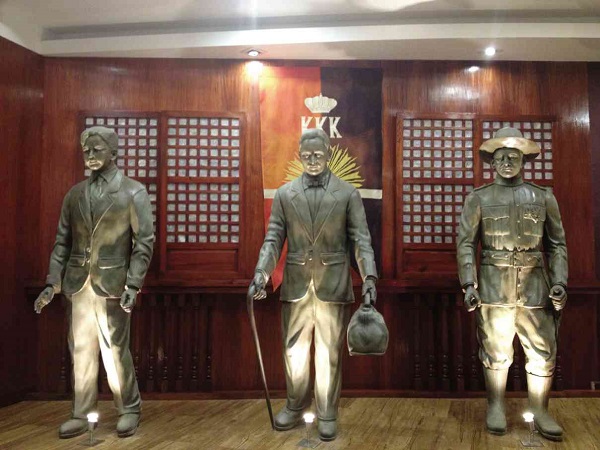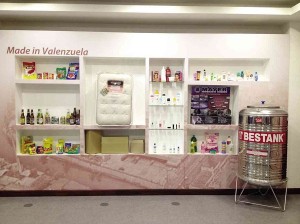Museum instills pride in Valenzuelanos

LIFE-SIZED statues of the trio dubbed “Heroes of Valenzuela” (from left to right), namely, Delfin Velilla, Pio Valenzuela and Tiburcio de Leon.who joined the revolution against Spanish authorities. Contributed photo
With the recent opening of the Valenzuela City Museum, outgoing Mayor Sherwin Gatchalian hopes to realize a longtime dream: To inspire residents by introducing them to the city’s rich history, bustling industry and culture.
Located at the ground floor of city hall, the museum features artifacts, maps, text and photo panels, statues and interactive terminals.
“In my experience, people just work and sleep here [at city hall]. It stops there. They have lost their sense of touch, affinity or connection to the city. We hope this museum will bring back that sense of affinity,” Gatchalian said after the ceremonies marking the museum’s inauguration on June 27.
Learning experience

PROUDLY made in Valenzuela items ranging from mattresses, alcoholic drinks and skin care and beauty, among others, are also on display at the newly opened Valenzuela City Museum to remind visitors that theirs is a city with a bustling industrial trade. Contributed photo
He added that the museum could provide an alternative learning experience for students and the general public about the city’s history.
“In history books, the story of Valenzuela occupies just one, maybe two pages. It’s not covered in depth. So here in the museum, they will learn about the city’s history while feeling as if they have traveled [back] in time,” he said.
Jonathan Balsamo, the museum’s curator, said that it is divided into several exhibits. Visitors entering the museum are first introduced to the precolonial period which shows that a group of settlers lived within the city’s modern boundaries which was then surrounded by bodies of water.
“The town was first called ‘Polo’ because it looked like an island then,” he added.
The next exhibit shows Valenzuela during the Spanish period when a church was constructed and authorities founded the town of Polo in 1623.
“Then the revolution came where a son of Polo, Dr. Pio Valenzuela, played a key part by publishing the Katipunan’s newspaper with the help of residents,” Balsamo said.
The museum also has exhibits showing important events during the American period, including the construction of the MacArthur Highway which led to enterprising Americans buying swathes of land which were turned into sites for subdivisions and factories.
On the other hand, the display on World War II shows residents forming a guerilla group to combat Japanese invaders.
The second half of the museum is devoted to the present as it features the city as an industrial hub. There is a section called “Made in Valenzuela” which features products made from roasted peanuts on top of beauty and skin-care products, beer, mattresses, steel pipes, water tanks and water pumps—all made by factories based in the city.
The final part of the museum shows facilities and services offered by the current city government, past and present mayors and congressmen, awards garnered by the city and modern-day Valenzuelanos deemed as role models for the current generation.
The museum is seen to complement the first city government-supported museum in the city, Museo Valenzuela, which is entirely devoted to the life of Dr. Pio Valenzula after whom the city was named.
Museo Valenzuela, located near the National Shrine of the Our Lady of Fatima in Marulas, features a diorama showing highlights of Valenzuela’s life, along with several artifacts donated to the museum by his family.
Both museums are open to the general public and do not charge entrance fees. Group tours, however, need to be booked for scheduling purposes.
Balsamo expressed hope that knowing the city’s history and identity through these museums would encourage love of town and country for residents.
“By viewing these exhibits, people will have an idea of what it is like to be a Valenzuelano. They would love the town and give service to it,” he said.